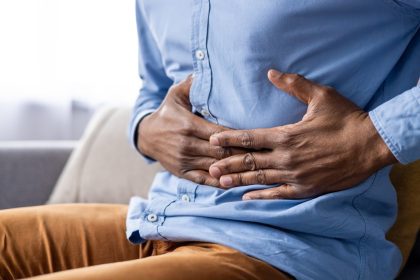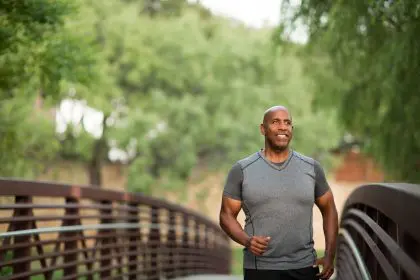The sensation of fullness after overeating can be uncomfortable, but health experts have identified specific ways to alleviate this discomfort through gentle movement. Rather than succumbing to the urge to lounge on the couch, strategic physical activity can transform how you feel after a large meal.
The science behind digestion
When we consume a substantial meal, our bodies direct blood flow toward the digestive system, often leaving us feeling lethargic. Gastroenterologist Dr. Sarah Chen explains that this process, known as postprandial somnolence, diverts blood flow away from other body systems to aid digestion. However, light physical activity can actually enhance this natural process by stimulating the digestive muscles and improving nutrient absorption.
The power of gentle yoga
While intense exercise isn’t recommended after a heavy meal, yoga offers a gentle solution for digestive discomfort. Yoga instructor Tamal Dodge recommends specific poses like Child’s Pose and Cat-Cow stretches, which can ease bloating and promote healthy digestion. The combination of controlled breathing and gentle stretching creates an optimal environment for your body to process food efficiently, reducing discomfort and improving overall well-being.
Breathing techniques for comfort
Specialized breathing exercises significantly impact how your body handles a large meal. Deep diaphragmatic breathing, also known as belly breathing, helps activate the parasympathetic nervous system. Dr. Ed Levine notes that this “rest and digest” response can increase digestive efficiency by up to 20% when practiced correctly after meals.
Walking for wellness
A simple walk proves remarkably effective at encouraging proper digestion. Trainer Ariane Hundt explains that just 15-20 minutes of walking after a meal can reduce blood sugar spikes by up to 22% compared to remaining seated. This gentle movement also helps prevent acid reflux and promotes better nutrient absorption through increased blood circulation.
Strategic timing
The timing of post-meal movement matters significantly. Dr. Chen recommends waiting approximately 10-15 minutes after eating before engaging in any physical activity. This brief pause allows your body to initiate the digestive process while preventing potential discomfort from immediate movement. However, waiting longer than 45 minutes may reduce the benefits of post-meal exercise.
Core connection
Dr. Niket Sonpal explains that gentle core exercises can support the digestive system without causing additional stress. Simple movements like seated twists and gentle side bends help massage internal organs and promote healthy digestion. However, avoid traditional crunches or planks immediately after eating, as these can increase discomfort.
Environmental considerations
Choosing the right environment for post-meal movement significantly impacts its effectiveness. Indoor spaces should be well-ventilated, while outdoor activities benefit from fresh air and natural light. Research indicates that exposure to nature during post-meal walks can reduce stress levels by up to 15%, further supporting healthy digestion.
Common mistakes to avoid
Many people make crucial mistakes when trying to ease post-meal discomfort. Nutritionist Emma Roberts warns against drinking large amounts of water immediately after eating, as this can dilute digestive enzymes. Additionally, avoid lying down flat or engaging in vigorous exercise within two hours of a heavy meal.
Long-term benefits
Regular implementation of post-meal movement leads to improved digestive health over time. Studies show that consistent post-meal walking can reduce the risk of digestive disorders by up to 25%. This practice also helps regulate metabolism and supports healthy weight management.
Customizing your approach
Every person’s digestive system responds differently to movement. Dr. Chen recommends starting with five-minute walking intervals and gradually increasing duration based on comfort level. Pay attention to how your body responds to different types of movement and adjust accordingly.
Creating healthy habits
Incorporating gentle movement after meals becomes easier when integrated into daily routines. Set reminders on your phone, keep comfortable walking shoes at work, or schedule walking meetings after lunch. These small changes can lead to significant improvements in digestive health over time.
Expert recommendations for sustainable practice
Fitness expert Michael Torres suggests creating a post-meal movement routine that fits your lifestyle. This might include desk stretches for office workers, gentle walking for those working from home, or standing exercises for people with limited mobility. The key is consistency rather than intensity.
Understanding your body’s signals
Learning to recognize and respond to your body’s digestive signals improves the effectiveness of post-meal movement. Physical therapist Dr. Lisa Park emphasizes the importance of distinguishing between normal fullness and excessive discomfort, adjusting activity levels accordingly.















